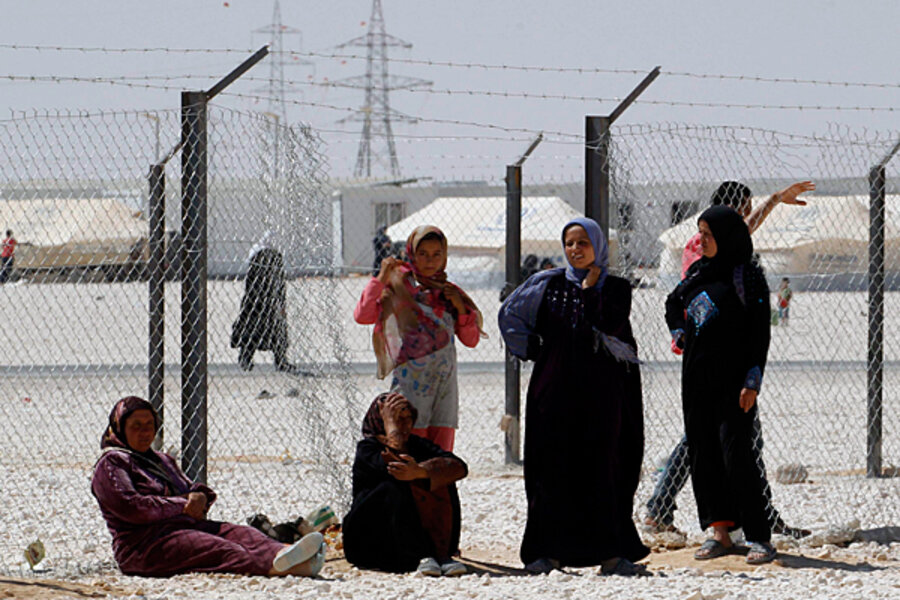As Syria's death toll climbs to 100,000, options for refugees decline
Loading...
| Amman, Jordan
The Syrian war's death toll may be as high as 100,000 now, but as the violence mounts, the options for escaping it are shrinking. Countries like Turkey and Iraq have long limited the number of Syrian refugees who can cross their borders, and now there are increasingly clear signs that Jordan, which hosts more than half a million refugees, is doing the same.
Since May 17, there has been a precipitous decline in the number of refugees entering the kingdom. Jordanian officials insist that this is not a result of a government policy, but an uptick in fighting on the Syrian side of the border, which prevents refugees from reaching Jordan safely.
"We have not changed our way of handling the matter," says Jordanian Prime Minister Abdullah Ensour. "There are lulls, sometimes, not many people come. ... It also depends on who has the upper hand on the other side. If the government forces have the upper hand, then we expect less [to cross]."
"It is not a policy – it is a situation," he says.
The Syrian Army has indeed launched a major offensive, extending its area of control south along the major road that connects Damascus to Jordan and retaking a number of previously rebel-held border points. But while previous interruptions in the refugee flow because of fighting have lasted a matter of days, and often been followed by a surge of new entrants, what is happening now is a sustained decrease that has lasted more than a month. For the first five months of 2013, Jordan averaged more than 1,500 entries a day. Since May, there have been fewer than 500 a day.
Many of the recently arrived refugees say they were turned back at the border and told to try another day, often multiple times. One 27-year-old refugee in Zaatari camp describes how his two sisters, who had spent two days waiting in the border town of Tal Shehab with their children, were turned back by Jordanian riot police when they finally reached the crossing point in late May.
"There were a lot of people at the border, and they had let a lot of people through, and they were not going to let more people through. And my sister begged him, saying 'I have five small children with me, please let us through'," he says. "The riot police told one of my sisters she could come into this bedroom with him, and he would let them in quickly." His sisters refused, and left the border. They next day they were allowed to enter through the same crossing without problems, he says.
Stories of abuses at the border have long circulated among refugees, as have those of extortion by both the Jordanian army and Syrian rebels, but now they are increasing. A researcher from Human Rights Watch, which is preparing a report on the issue, says the testimonies indicate that some kind of limit has been put on the number of entries.
Peter Bouckaert, the group's emergency director, suggests that the Free Syrian Army could play a role. The FSA has previously been instrumental in helping Syrian refugees reach Jordan, but several sources suggested the FSA may be working with the Jordanian military to now limit the scope of the refugee influx. The Jordanian military has reportedly allowed aid and even weapons to cross into Syria and may also be training rebel fighters.
"I think it's a combination of some areas being closed because of the fighting, and the Jordanians closing some areas of the border at some times ... and also the FSA restricting some access to the border," says Mr. Bouckaert.
Syrian refugees have already imposed a substantial burden on its economy, crowding public schools and hospitals, consuming subsidized goods, competing with locals for jobs, and straining scarce water resources.
They now make up nearly 10 percent of the total population, and as much as 50 percent of the population in some of the border towns. Their numbers bring a risk of social unrest, especially if they bring their war into Jordan, as many there fear. And with appeals for international aid constantly underfunded, there are few incentives to offer to countries like Jordan to keep their borders open. Those fleeing the fighting will likely find themselves with fewer and fewer places to run.







